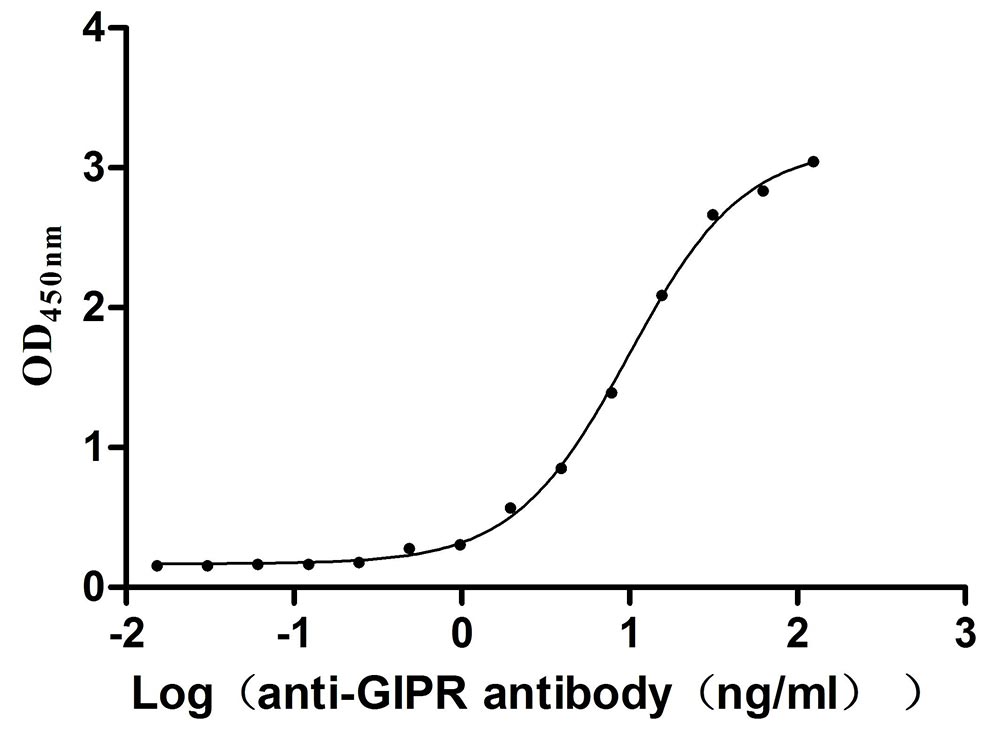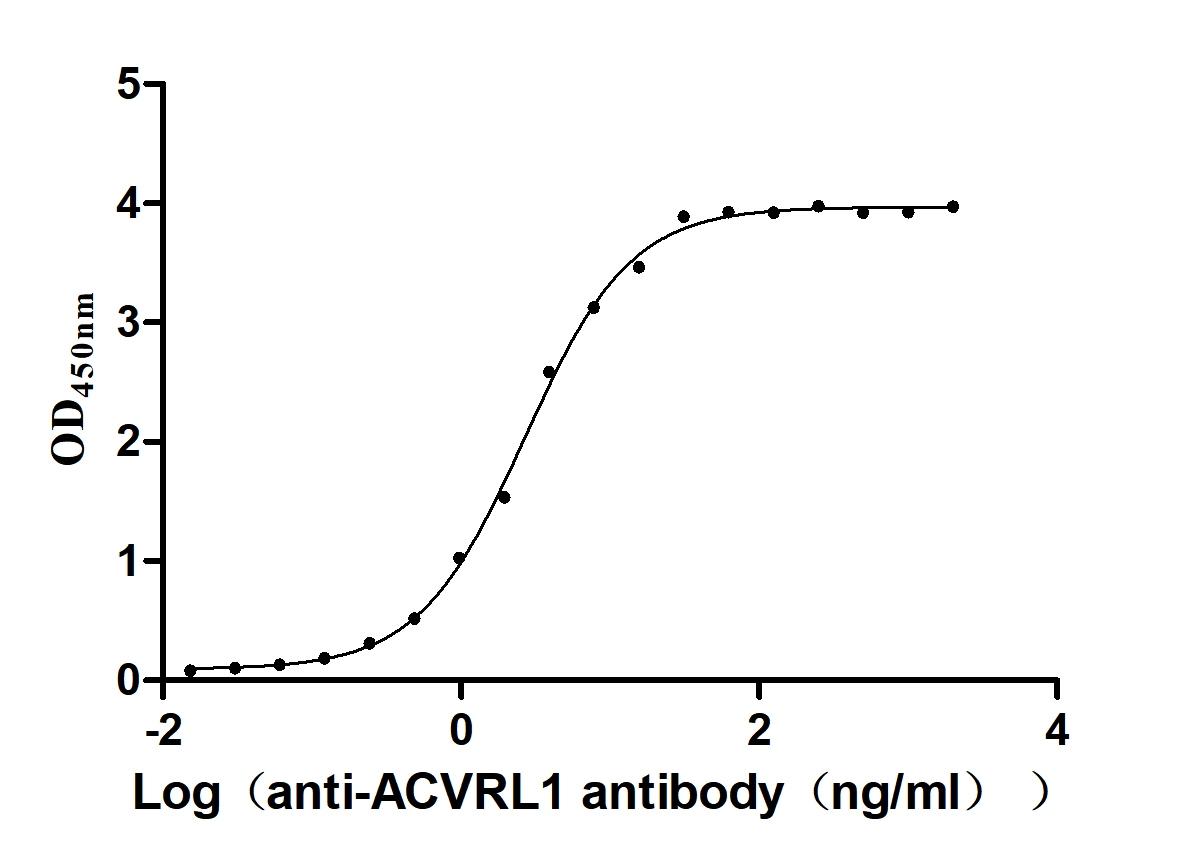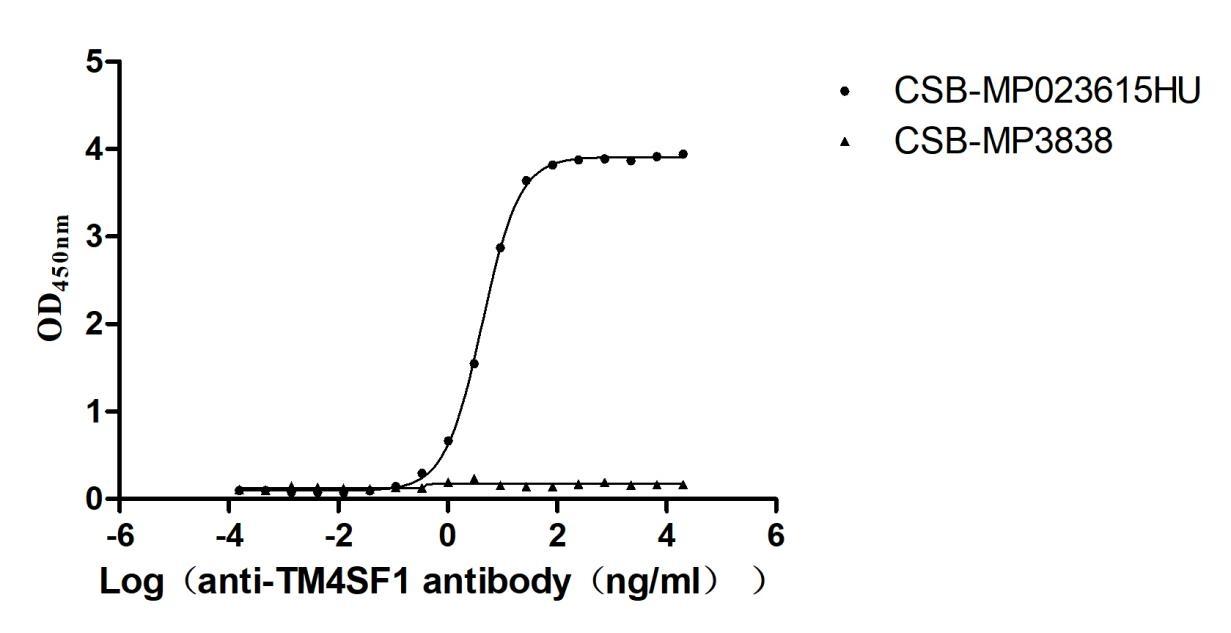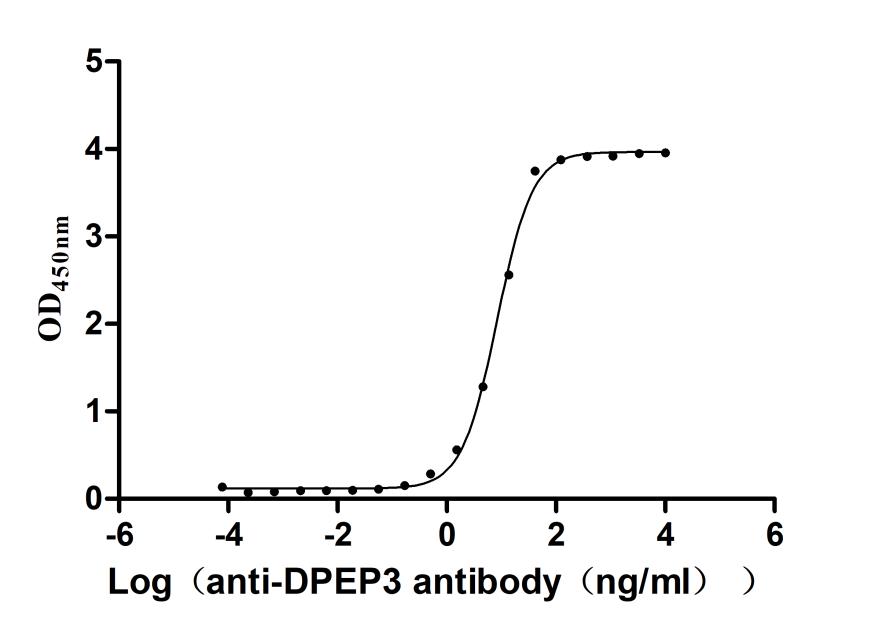Recombinant Human Lysophosphatidic acid receptor 3 (LPAR3), partial
-
中文名稱:人LPAR3重組蛋白
-
貨號:CSB-YP013049HU
-
規(guī)格:
-
來源:Yeast
-
其他:
-
中文名稱:人LPAR3重組蛋白
-
貨號:CSB-EP013049HU-B
-
規(guī)格:
-
來源:E.coli
-
共軛:Avi-tag Biotinylated
E. coli biotin ligase (BirA) is highly specific in covalently attaching biotin to the 15 amino acid AviTag peptide. This recombinant protein was biotinylated in vivo by AviTag-BirA technology, which method is BriA catalyzes amide linkage between the biotin and the specific lysine of the AviTag.
-
其他:
-
中文名稱:人LPAR3重組蛋白
-
貨號:CSB-BP013049HU
-
規(guī)格:
-
來源:Baculovirus
-
其他:
-
中文名稱:人LPAR3重組蛋白
-
貨號:CSB-MP013049HU
-
規(guī)格:
-
來源:Mammalian cell
-
其他:
產(chǎn)品詳情
-
純度:>85% (SDS-PAGE)
-
基因名:
-
Uniprot No.:
-
別名:Calcium mobilizing lysophosphatidic acid receptor LP A3; Calcium mobilizing lysophosphatidic acid receptor LPA 3; Calcium mobilizing lysophosphatidic acid receptor LPA3; EDG 7; Endothelial cell differentiation gene 7; Endothelial differentiation lysophosphatidic acid G protein coupled receptor 7; FLJ98231; GPCR; HOFNH 30; HOFNH30; LP A3; LPA 3; LPA receptor 3; LPA receptor EDG 7; LPA receptor EDG7; LPA-3; LPA3; LPAR 3; Lpar3; LPAR3_HUMAN; Lysophosphatidic acid receptor 3; Lysophosphatidic acid receptor Edg 7; Lysophosphatidic acid receptor Edg-7; Lysophosphatidic acid receptor Edg7; OTTHUMP00000011573; RP4 678I3; RP4678I3
-
種屬:Homo sapiens (Human)
-
蛋白長度:full length protein
-
蛋白標(biāo)簽:Tag?type?will?be?determined?during?the?manufacturing?process.
The tag type will be determined during production process. If you have specified tag type, please tell us and we will develop the specified tag preferentially. -
產(chǎn)品提供形式:Lyophilized powder
Note: We will preferentially ship the format that we have in stock, however, if you have any special requirement for the format, please remark your requirement when placing the order, we will prepare according to your demand. -
復(fù)溶:We recommend that this vial be briefly centrifuged prior to opening to bring the contents to the bottom. Please reconstitute protein in deionized sterile water to a concentration of 0.1-1.0 mg/mL.We recommend to add 5-50% of glycerol (final concentration) and aliquot for long-term storage at -20℃/-80℃. Our default final concentration of glycerol is 50%. Customers could use it as reference.
-
儲存條件:Store at -20°C/-80°C upon receipt, aliquoting is necessary for mutiple use. Avoid repeated freeze-thaw cycles.
-
保質(zhì)期:The shelf life is related to many factors, storage state, buffer ingredients, storage temperature and the stability of the protein itself.
Generally, the shelf life of liquid form is 6 months at -20°C/-80°C. The shelf life of lyophilized form is 12 months at -20°C/-80°C. -
貨期:Delivery time may differ from different purchasing way or location, please kindly consult your local distributors for specific delivery time.Note: All of our proteins are default shipped with normal blue ice packs, if you request to ship with dry ice, please communicate with us in advance and extra fees will be charged.
-
注意事項:Repeated freezing and thawing is not recommended. Store working aliquots at 4°C for up to one week.
-
Datasheet :Please contact us to get it.
相關(guān)產(chǎn)品
靶點詳情
-
功能:Receptor for lysophosphatidic acid (LPA), a mediator of diverse cellular activities. May play a role in the development of ovarian cancer. Seems to be coupled to the G(i)/G(o) and G(q) families of heteromeric G proteins.
-
基因功能參考文獻:
- Using pharmacological activators and shRNA knockdown experiments, we demonstrate that activation of LPA3 inhibits megakaryopoiesis in human HSCs. In addition, pharmacological activation of LPA3 suppressed thrombopoiesis in zebrafish. PMID: 29239275
- The results indicate that LPA2 and LPA3 receptors play opposing roles during red blood cells differentiation. PMID: 27244685
- myeloma cells stimulate mesenchymal stem cells (MSCs to produce autotaxin, an indispensable enzyme for the biosynthesis of lysophosphatidic acid, and LPA receptor 1 (LPA1) and 3 (LPA3) transduce opposite signals to MSCs to determine the fate of MSCs. PMID: 27641212
- Expression profiles reveal LPAR3 (lysophosphatidic acid receptor 3) as a mediator for mitotic phosphorylation-driven pancreatic cell motility and invasion. Together, this work identifies YAP as a novel regulator of pancreatic cancer cell motility, invasion and metastasis. PMID: 26440309
- These data indicated that the expression of LPA receptor 3 was increased in human triple-negative breast cancers and is associated with tumor metastatic ability. PMID: 25209561
- Suggest that LPA2 and LPA3 may function as a molecular switch and play opposing roles during megakaryopoiesis of K562 cells. PMID: 25463482
- The results demonstrate LPA-stimulated migration in oral carcinoma cells through LPAR3, mediated further by PKC, which acts either in concert with or independently of EGFR transactivation PMID: 24928086
- LPA3 mRNA is clearly expressed in human PANC-1 tumor cells. PMID: 24061591
- Lysophosphatidic acid (LPA) increased hepatocellular carcinoma cells cell invasion, which was LPA-receptor dependent. PMID: 23569130
- in the normal human menstrual cycle, lysophosphatidic acid receptor 3 messenger RNA and protein expression change, indicating that this gene may be related to the function of the endometrium. PMID: 22872026
- The results indicated that LPA(3) acts as a positive regulator of cell motility and invasion in sarcoma cells, suggesting that LPA signaling pathway via LPA(3) may be involved in the progression of sarcoma cells. PMID: 23167620
- High LPAR3 expression is associated with aggressiveness of breast carcinoma. PMID: 22922883
- LPA3 Receptor act as a negative regulator on cell motile and invasive abilities of colon cancer. PMID: 22763559
- found that LPA receptor 2/3-mediated IL-8 expression occurs through Gi/PI3K/AKT, Gi/PKC and IkappaB/NF-kappaB signaling PMID: 21964883
- study found that LPS induces both ATX and LPA3 expression in THP-1 cells; the PKR and SPK1-mediated pathways are involved in both ATX and LPA3 induction, resulting in the coordinate up-regulation of these two genes PMID: 22314276
- Mutation in LPA3 gene indicate that the alterations in LPA receptor gene may play some role in pathogenesis in human osteosarcoma cells. PMID: 21116120
- Data show that CLL cells express LPA receptors LPA(1-5) and VEGF receptors, and the plasma levels of VEGF are elevated in CLL patients. PMID: 19860625
- show that human microglia express LPA receptor subtypes LPA(1), LPA(2), and LPA(3) on mRNA and protein level. LPA activation of C13NJ cells induced Rho and extracellular signal-regulated kinase activation and enhanced cellular ATP production. PMID: 19899077
- demonstrate that two biological fluids, blood plasma and seminal plasma, differentially activate LPA receptors PMID: 12123830
- results suggested that lysophosphatidic acid (LPA) receptors LPA(2) and LPA(3) may be involved in VEGF expression mediated by LPA signals in human ovarian oncogenesis PMID: 12668280
- data suggest that endothelial differentiation gene EDG-7 regulates Lysophosphatidic acid(LPA)-mediated mesangial cell proliferation and suggest that EDG-7 and EDG-2 LPA receptors play a diverse role in mesangial cell proliferation PMID: 15292052
- expression of LPA-induced inflammatory response genes is mediated by LPA1 and LPA3 PMID: 17923111
- Lysophosphatidic acid receptor 3 may contribute to the pathogenesis of rheumatoid arthritis through the modulation of fibroblast-like synoviocyte migration and cytokine production. PMID: 18006645
- Lysophosphatidic acid might regulate VEGF-C and lymphatic marker expression in endothelial cells, which contributes to endothelial cell tube formation in vitro and in vivo, thus facilitating endothelial cell participation lymphangiogenesis. PMID: 18627789
- Expression of LPA3 during ovarian carcinogenesis contributes to ovarian cancer aggressiveness, suggesting that the targeting of LPA production and action may have potential for the treatment of ovarian cancer. PMID: 19001604
- Switching of LPA receptor expression from LPA3 to LPA1, may be involved in prostate cancer progression and/or androgen independence PMID: 19025891
- LPA(1) receptor, LPA(2) and LPA(3) receptors-induced VASP phosphorylation is a critical mediator of tumor cell migration initiation PMID: 19081821
- LPA-stimulated cell growth is mediated by distinct but overlapping receptors and signaling pathways in these two model ovarian cancer cell lines. PMID: 19420982
顯示更多
收起更多
-
亞細胞定位:Cell membrane; Multi-pass membrane protein.
-
蛋白家族:G-protein coupled receptor 1 family
-
組織特異性:Most abundantly expressed in prostate, testes, pancreas, and heart, with moderate levels in lung and ovary. No detectable expression in brain, placenta, liver, skeletal muscle, kidney, spleen, thymus, small intestine, colon, or peripheral blood leukocytes
-
數(shù)據(jù)庫鏈接:
Most popular with customers
-
Recombinant Human Heat-stable enterotoxin receptor (GUCY2C), partial (Active)
Express system: Mammalian cell
Species: Homo sapiens (Human)
-
Recombinant Human Tumor necrosis factor receptor superfamily member 9 (TNFRSF9), partial (Active)
Express system: Mammalian cell
Species: Homo sapiens (Human)
-
Recombinant Human Insulin growth factor-like family member 1 (IGFL1) (Active)
Express system: Mammalian cell
Species: Homo sapiens (Human)
-
Recombinant Mouse Gastric inhibitory polypeptide receptor (Gipr), partial (Active)
Express system: Mammalian cell
Species: Mus musculus (Mouse)
-
Recombinant Human Serine/threonine-protein kinase receptor R3 (ACVRL1), partial (Active)
Express system: Baculovirus
Species: Homo sapiens (Human)
-
Recombinant Human Serotransferrin(TF) (Active)
Express system: Mammalian cell
Species: Homo sapiens (Human)
-
Recombinant Human Transmembrane 4 L6 family member 1(TM4SF1)-VLPs (Active)
Express system: Mammalian cell
Species: Homo sapiens (Human)
-
Recombinant Macaca fascicularis Dipeptidase 3(DPEP3) (Active)
Express system: Mammalian cell
Species: Macaca fascicularis (Crab-eating macaque) (Cynomolgus monkey)




















